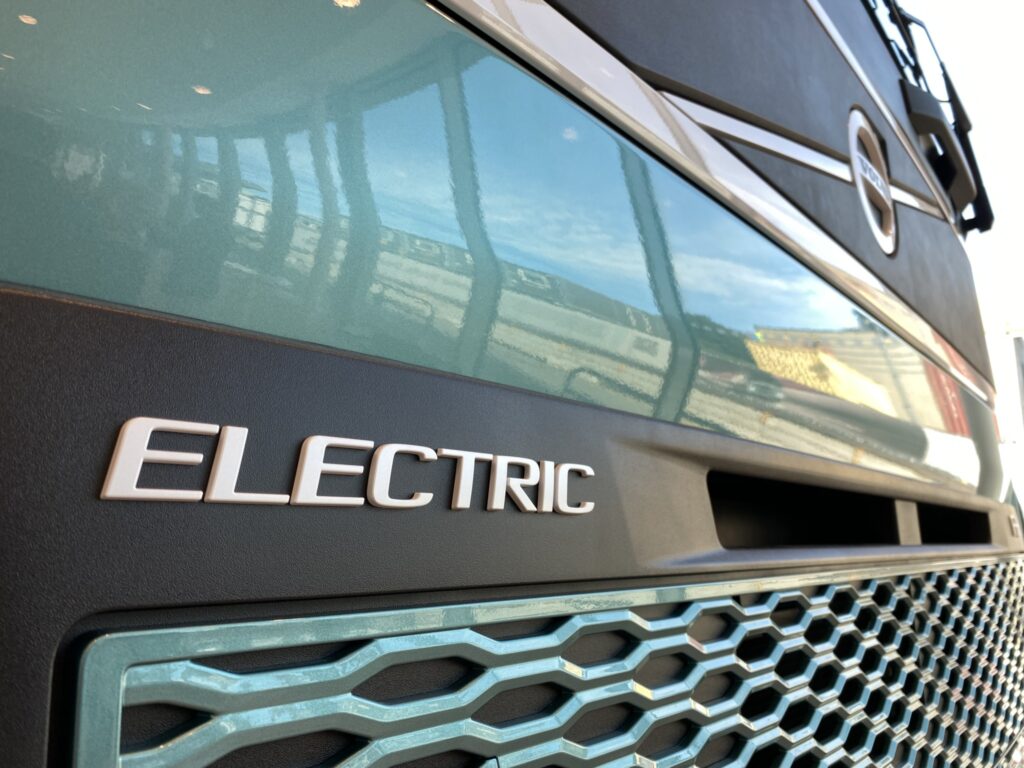Target sectors that are easier to electrify, ATA’s Spear urges
Focusing on sectors that are easier to electrify while building infrastructure along with the power grid is key to the electrification process, said Chris Spear, president and CEO of the American Trucking Associations.
Drayage, less-than-truckload, garbage vehicles, step vans and school buses must be targeted, Spear said at Cummins-Meritor and Pressure Systems International’s fleet technology event in San Antonio, Texas. “This is not going to happen by 2030 and the given timelines are unachievable,” he said.

It takes 15 minutes to fill up a diesel truck and it can travel 1,200 miles (1,931 km), he said. An electric truck, depending on its batteries, takes six hours to charge and can run about 250 miles (400 km).
The two are not equal and will not be equal in five to 10 years. But in another 15 to 20 years some parity can be achieved.
He told attendees that China and the Democratic Republic of Congo are not reliable long-term sources of graphite, nickel, cobalt and lithium – minerals used to make batteries. Spear said that even if domestic mining is allowed, it will take 10 years for these minerals to reach the market.
Challenges
Focusing on challenges facing the trucking industry, Spear said that California has been handed the keys to set and regulate policy and warned that soon another 16 U.S. states will be following in its footsteps.
He also urged the U.S. government to repeal the 12% federal excise tax, which results in an additional charge of about US$25,000 for every new tractor. Spear said businesses should be able to use that large amount of money for other purposes.
He also had strong words for union bosses, saying they were the cause of 30,000 jobs being lost at trucking giant Yellow, which recently declared bankruptcy.
Spear urged industry members to be aware of the forces in play, and to come together to deal with them.
Optimistic about 2024 freight market
The talk was not all doom and gloom. Spear was optimistic about the freight market in 2024.
“It could be a pretty good year as fuel prices are down and staying steady. Companies are getting control of the labor market,” he said.
There is less consolidation and more spending, as investments are being made in equipment and training. “I am optimistic about 2024 based on the numbers, the economic data suggest all the ingredients are there for a good year,” Spear said.
Have your say
This is a moderated forum. Comments will no longer be published unless they are accompanied by a first and last name and a verifiable email address. (Today's Trucking will not publish or share the email address.) Profane language and content deemed to be libelous, racist, or threatening in nature will not be published under any circumstances.
-
It should limit to light delivery vehicle that go under 240 km or 150 miles in a day and heavy truck under 92 miles or 150 km per day otherwise natural gas or propane is a much better choice. I can get new natural gas school bus much cheaper the electric and is a better choices north of Chicago.
In reference to Mr. Spear’s comment “Focusing on sectors that are easier to electrify” though I agree with basic concept, when it comes to “Drayage, less-than-truckload”, those two sectors require further drilling down to separate “local” from “long distance” operations. As a Houston based carrier with major operations in Dallas, providing both drayage and LTL; 80% of drayage business and 95% of our LTL business is long distance; i.e., 700+ miles round trip.
EV can be a viable option for our “local” drayage and LTL business, but not for our “bread and butter” business in those segments. If EV is the only option, we have to look at changing our business model as a company, abandoning our long distance business or revise our long distance ops model to take into account EV’s limited range and longer “refueling”.
The vast majority of our drayage business is in the 350 – 400 one-way miles range . . . Today, delivery is made in six and a half to seven hours, with the driver still having hours for starting the return trip. With EV, will end up 100 to 150 miles short, driver will run out hours based on today’s requirement which will increase the delivery time and costs to shippers. An alternative would be to set up relay points to maintain current delivery times, however, this will increase costs (power unit and driver capacity investments, reduce asset utilization, etc.) as two power units and drivers will be required to delivery what a single power unit and driver can delivery today.
It is truly disappointing that decisions that will impact our country’s logistics/transportation industry and infrastructure are being made in a vacuum for political reasons and people who are insulated economically from there effects.